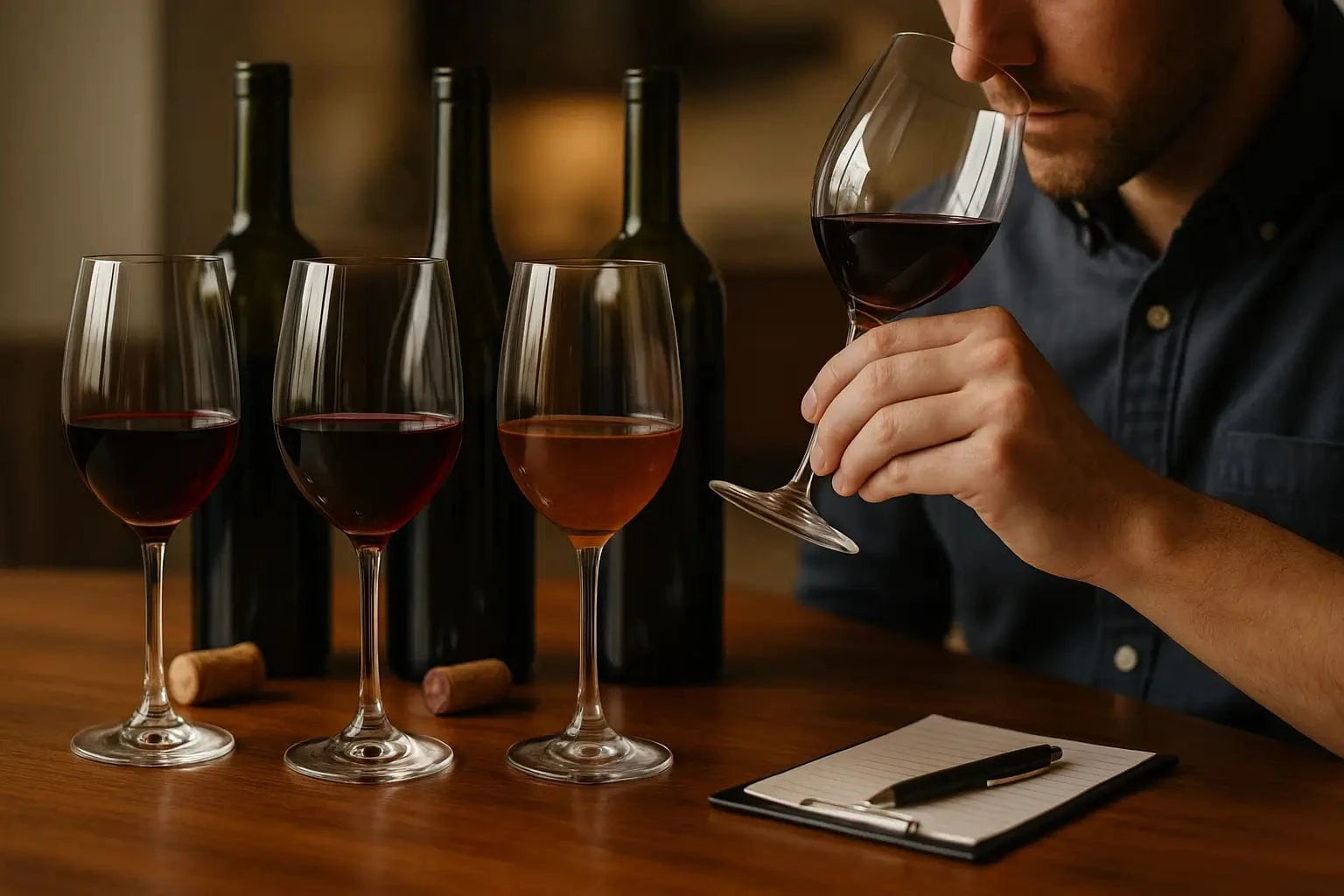Opening a bottle of wine is always a pleasure, but finishing it in one sitting isn’t always possible. Whether you’re savoring a glass with dinner or sampling different bottles, you might wonder: how long does opened wine last, and what’s the best way to store leftover wine? This guide covers everything you need to know about storing opened wine, preserving its freshness, and maximizing its shelf life.
If you’re looking for even more detailed tips on wine storage and preservation, check out our Ultimate Guide to Wine Storage and Preservation.
Why Does Wine Go Bad After Opening?

Once a bottle is opened, wine is exposed to oxygen, light, and temperature changes. While a little oxygen can help wine “open up” and release aromas, too much exposure leads to wine oxidation. This process causes wine to lose its freshness and eventually spoil, resulting in dull flavors or even vinegar-like aromas. Light and heat can accelerate wine spoilage, especially in delicate wines.
For a deeper dive into how bottle orientation impacts wine quality, see our guide on proper wine bottle orientation.
Key factors that affect opened wine shelf life:
- Oxygen exposure (wine oxidation)
- Temperature fluctuations
- Light exposure
To avoid common pitfalls that can lead to spoilage, review our comprehensive list of wine storage mistakes.
How Long Does Opened Wine Last?
The shelf life of opened wine depends on the type of wine and how it’s stored. Here’s a quick guide:
- Red wine: 3–5 days in the fridge with a cork or stopper. Lighter reds (like Pinot Noir) spoil faster than fuller-bodied reds.
- White and rosé wine: 3–5 days in the fridge with a cork or stopper.
- Sparkling wine: 1–3 days with a sparkling wine stopper. Bubbles fade quickly.
- Fortified wine (Port, Sherry): 1–3 weeks, as higher alcohol and sugar content help preserve freshness.
For insights on how storage environments can affect wine longevity, explore our guide to wine cabinet storage time.
How many days can you keep wine after opening? Most wines taste best within 3–5 days of opening, but proper storage can extend this window.
How to Store Wine After Opening: Essential Tips
Proper wine storage tips can help you keep wine fresh after opening and minimize waste. Here’s how to store opened wine for the best results:
- Store bottles upright: Keeping the bottle upright reduces the surface area exposed to oxygen, slowing wine oxidation.
- Refrigerate after opening: Both red and white wines benefit from cool storage. A wine refrigerator or even your kitchen fridge (ideally at 45–55°F / 7–13°C) slows chemical reactions that cause spoilage. Storing wine at the right temperature is crucial for preserving its quality. For more details on creating the perfect storage environment, see our guide on wine cellar temperature and humidity and our wine storage humidity guide.
If you’re curious about storing wine in your kitchen appliance, check out wine in a regular fridge.
For those looking to create the ideal environment for both opened and unopened bottles, explore our range of wine cellar cooling systems to maintain consistent, wine-friendly temperatures.
- Reseal after each pour: Always replace the cork, use a wine stopper, or cover the opening tightly. If you’ve lost the cork, use plastic wrap and a rubber band as a temporary fix.
-
Avoid light and heat
Store opened wine away from direct sunlight and heat sources, which can speed up wine spoilage. Maintaining proper humidity is especially important for long-term storage. Learn how a wine cellar humidifier can help protect your collection.
Maintaining proper humidity is crucial for wine longevity. Check out our selection of wine cellar humidifiers to keep your storage conditions optimal. -
Minimize temperature fluctuations
Consistent, cool temperatures help preserve wine freshness. If you’re deciding between different storage solutions, our comparison of wine cabinet vs. wine cooler can help you choose the best option for your needs.
Avoid keeping wine in areas with fluctuating temperatures. For reliable, space-saving solutions, browse our wine cabinet cooling systems.
If you’re short on storage space, check out our wine storage tips for small spaces.
Wine Preservation Tools and Storage Hacks

If you want to extend opened wine shelf life, consider these wine preservation after opening methods:
- Vacuum wine stoppers: These handy tools remove air from the bottle, reducing oxidation. They’re affordable and effective for most still wines.
- Inert gas systems: Devices that inject argon or another inert gas create a protective layer over the wine, keeping it fresh for longer. Popular with enthusiasts, these systems can be pricier.
- Transfer to smaller bottles: Pour leftover wine into a smaller, airtight bottle to reduce the amount of air in contact with the wine.
- How to store opened wine without a cork: If the cork is lost, use a wine stopper, or as a last resort, plastic wrap and a rubber band. Store the bottle upright in the fridge.
For those on a budget, explore our DIY wine storage ideas.
Special Storage Considerations by Wine Type
- Red wine: Store in the fridge, even if you prefer to drink it at room temperature. Let it warm up for a few minutes before serving. Lighter reds spoil faster than robust varieties. For a full breakdown, visit our guide on red vs. white wine storage.
- White and rosé wine: Always refrigerate after opening. These wines are sensitive to both oxygen and light.
- Sparkling wine: Standard wine preservation systems don’t work for sparkling wines. Use a sparkling wine stopper to keep bubbles for up to 3 days.
- Fortified wines: These last longer due to higher alcohol and sugar, but still benefit from cool, dark storage.
If you’re storing multiple bottles, consider organizing your collection with our wine racks for both function and style.
How to Tell If Opened Wine Is Still Good

Wondering how to tell if opened wine is still good? Look for these signs of wine spoilage:
- Smell: Sour, vinegar, or musty aromas signal spoilage.
- Taste: Flat, sharp, or off flavors mean the wine has oxidized.
- Appearance: Brownish color in reds or yellowing in whites is a sign of oxidation.
For more indicators of spoilage, read our full guide on the signs of bad wine.
When in doubt, trust your senses—if it smells or tastes off, it’s time to discard.
Common Mistakes to Avoid
- Storing bottles on their side after opening (increases oxygen exposure)
- Leaving wine in direct sunlight
- Frequent temperature changes
- Using ineffective hacks (like a spoon in sparkling wine bottles)
To help you avoid the most frequent pitfalls, check out our comprehensive list of wine storage mistakes.
Conclusion

Storing opened wine properly can make a big difference in how long your wine stays fresh and enjoyable. By following these wine storage tips—minimizing oxygen, keeping bottles cool, and using the right tools—you’ll reduce waste and get the most out of every bottle. Cheers to enjoying wine at its best, every time!
Ready to upgrade your wine storage? Explore our best selling wine cellar cooling systems and ultra wine racks to keep your wine at its best. For seasonal advice and long-term storage strategies, don’t miss our seasonal wine storage tips and our comparison of aging vs. short-term wine storage.


